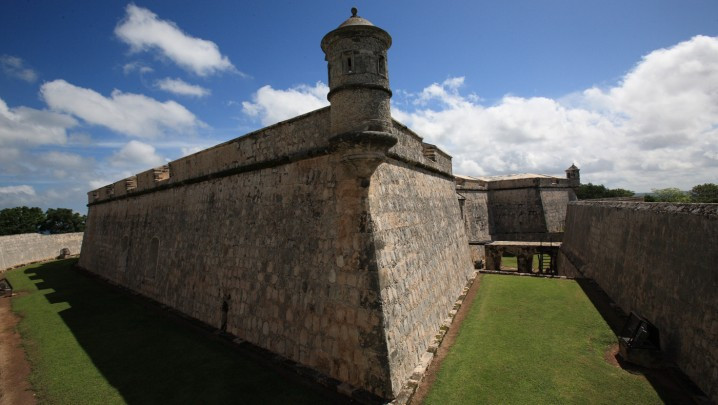This site is home to a large number of pre-Hispanic works that tell us about the development of Mayan communities before the Europeans arrived on the continent. There are ten galleries with information on Campeche in Mayan civilization, and the relationship between the latter and Mesoamerica generally (Gallery 1). The peninsula’s rich flora, fauna and mineralogy, which the ancient Maya used wisely, can be seen in the second gallery. Further on we can see how villages grew into cities, and how building techniques and architectural styles evolved over time (Gallery 3).
Another space is dedicated to the cycle of life, illustrated with figurines of Jaina, and the remains of bones telling us about physiology, bodily mutilations, dental incrustations and the deformation of the cranium (Gallery 4). Death is part of the human condition, and this was something the Mayan people had their own particular ideas about. The governors of the great cities such as Calakmul were buried accompanied by rich burial offerings of varied materials such as jadeite masks and vessels of many colors (Gallery 5).
For the ancient Maya, the universe had a fourfold division, with deities, colors, birds and trees pertaining to each direction. Stories of creation, battle and sacrifice turned into legends—about which we know little—but in time these themes were used in the decoration of the pieces such as the Becan vessel with its lid beautifully decorated with an iguana and the dying moments of a warrior (Gallery 6).
The artifacts and texts in the next gallery give us a better understanding of the Mayan legacy in terms of scientific knowledge, hieroglyphic writing and the various calendars with their astronomical associations.
Gallery 8 looks at the everyday life of men and women, particularly at the simple but effective technology they used, their ingenuity and physical effort. It must be remembered that they did not use draught or pack animals, nor did they use the wheel for practical purposes. The inhabitants of pre-Hispanic settlements had access to different goods and services depending on their place in the social hierarchy. Slaves, farmers, fishermen and hunters were on the lowest rung of the social pyramid. Craftsmen who worked in wood, stone or sea shells were at a higher level along with minor officials, stonecutters and masons. The level above was occupied by court assistants and the governor’s close relatives (Gallery 9).
Relationships with large political entities sometimes served for mutual aid, such as for marriages of the nobility, or for the exchange of goods. Nevertheless at other times there were wars to subjugate opponents and to extract tribute in goods or labor. The presence of the great lords was exalted in large monoliths, such as stela 21 of Edzna (Gallery 10).







